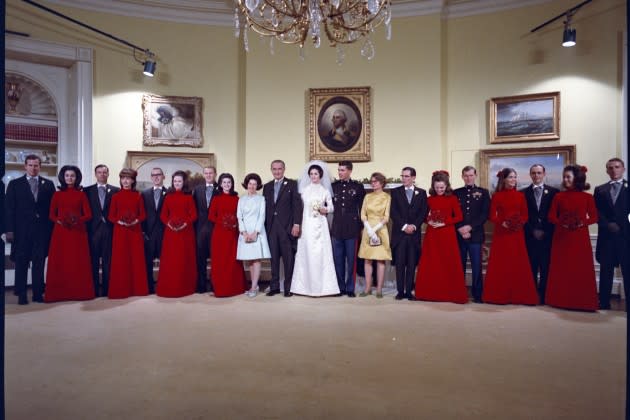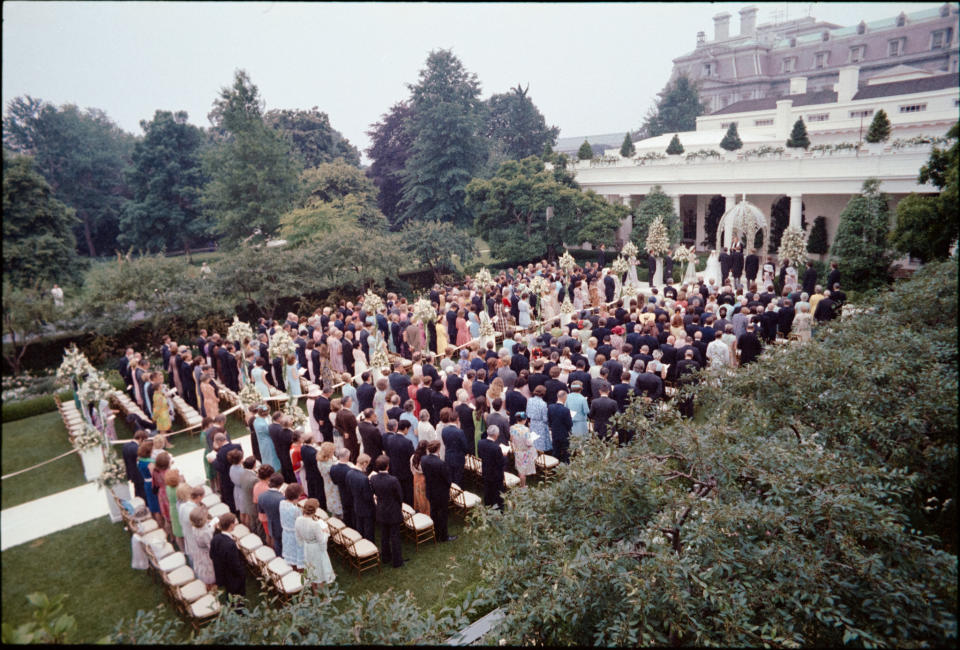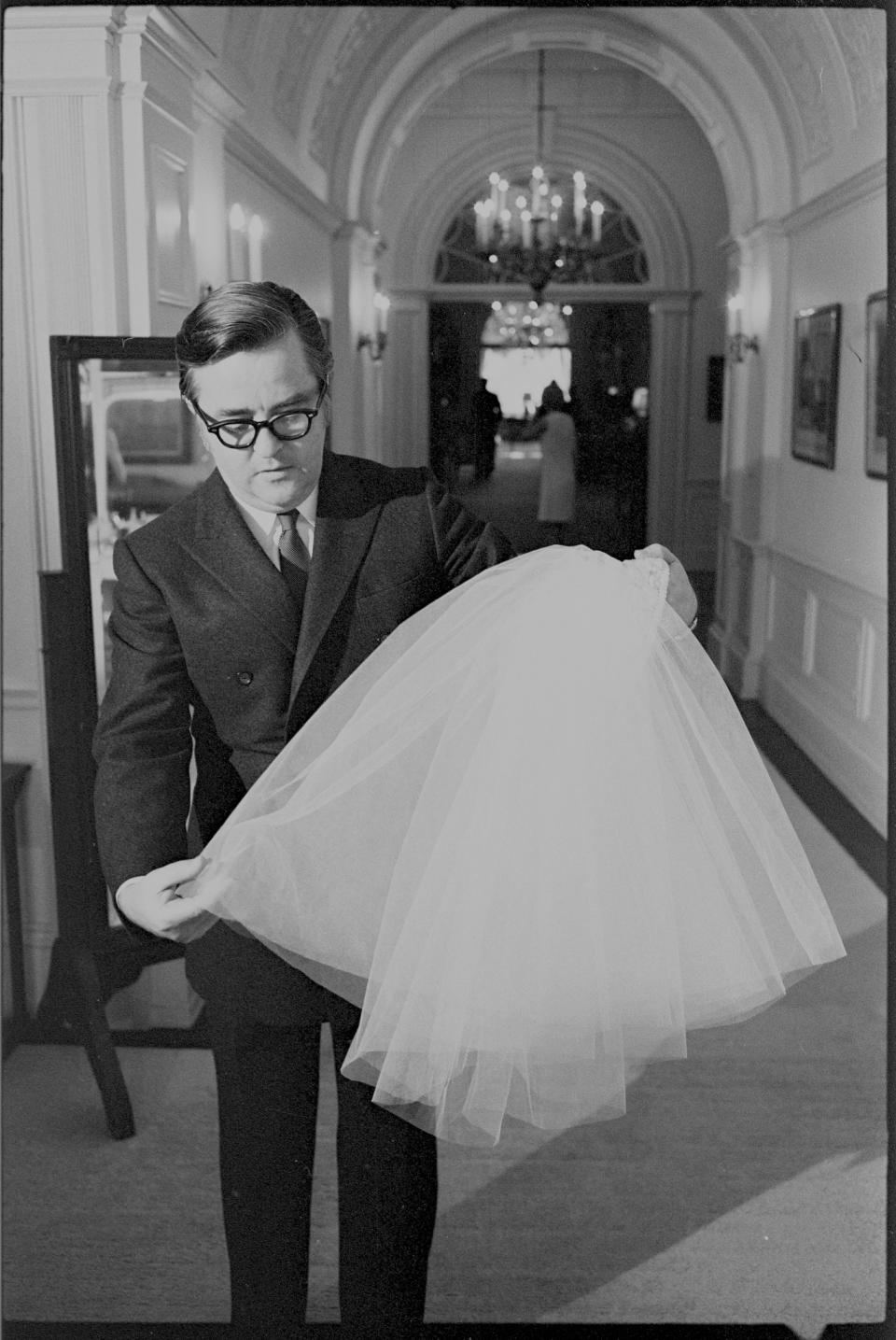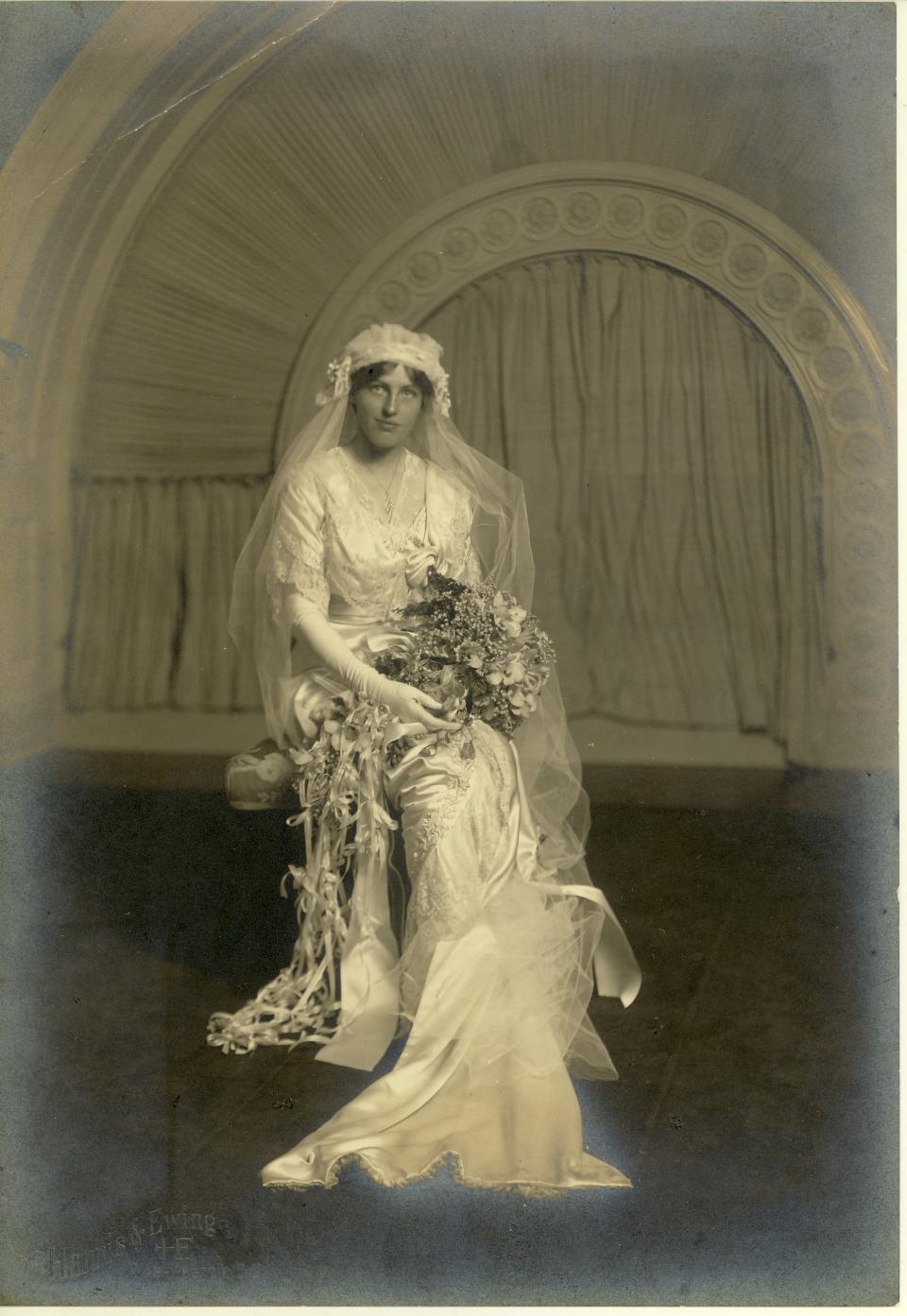White House Weddings Through the Years

Warring political parties may be the bedrock of American politics, but White House weddings remain a sanctuary from that debate.
That is one political message that more often than not is welcomed by Democrats and Republicans. It’s all relative, too, as evidenced by last year’s media frenzy over first granddaughter Naomi Biden’s South Lawn nuptials and former first daughter Tiffany Trump’s Mar-a-Lago affair. Now brides-to-be, fashion fans, event planners and others can check out eight of the 19 weddings that have been held at 1600 Pennsylvania Avenue without traveling to Washington, D.C.
More from WWD
White House Correspondents' Association Dinner 2023 Red Carpet
White House Respect for Marriage Act Signing With Cyndi Lauper, Sam Smith & More Photos
The Launch of "Electric Fashion" at the Victoria & Albert Museum
The White House Historical Association has unveiled a digital exhibition, “Something Old. Something New: Eight First Daughters’ Fashionable White House Weddings.” Organized in partnership with New York University’s Steinhardt School of Culture, Education and Human Development, Jillian Staricka, a costume design student, earned an internship to help cull the selections. Spanning 150 years, the exhibit starts with Maria Monroe in 1820 and wraps up with Tricia Nixon in 1971. Photos, press clips, illustrations and firsthand written accounts highlight what they wore and how they — as well as fellow first daughters Elizabeth Tyler, Nellie Grant, Alice Roosevelt, Jessie and Eleanor Wilson and Lynda Bird Johnson —celebrated.
Although the WHHA’s founder Jackie Kennedy was adamant about not commercializing the White House (despite her own fashion choices sparking national trends), White House weddings seem to do that indirectly. “That’s fair, but in the same vein at the heart of them, it’s a reminder that they are just a family who is living there. They are people with real lives beyond politics.”
Online visitors can mine bridal ideas such as personalized gowns. Priscilla of Boston’s Priscilla Kidder stitched the date of Nixon’s wedding along with her name, as well as her husband’s, with blue thread on the interior of her gown. Nearly all of the featured brides incorporated orange blossoms, whether that be for bouquets, floral displays, hair accessories, lace accents or within brocades.

Coming of age with the rise of modern media, Johnson and Nixon grasped their influence on the general public and “how much publicity would come along with having their weddings in the White House,” Staricka said. “They both chose designer dresses, which was a very big thing [versus further back when first daughters relied on dressmakers]. Nixon chose Kidder, who transformed the wedding industry. One of her employees described her as being ‘the Vera Wang,’ before Vera Wang. And Lynda Byrd chose Geoffrey Beene, who was at the top of his fashion game at that time. They were definitely thinking about what other people would see from their choices. They wanted to get the best of the best, and they had access to the best of the best.”
Johnson’s winter wonderland, celebrity-studded celebration in 1967 was the best party, Staricka said. Although Beene was not a wedding dress designer, Johnson, who was among the International Best Dressed List at that time, chose the New York talent for his reputation as a fashion power. Via “Something Old. Something New,” browsers can see a photo of Beene holding Johnson’s shoulder-length veil on her wedding day, as well as the red velvet dresses he designed for the bridesmaids at her December wedding. Her pearly white high-necked, long-sleeved slimming A-line gown was made of Abraham silk satin that was sourced from a Swiss mill. Nixon opted for an embroidered silk organdy dress with a trumpeted court train for her June 1971 nuptials. Security concerns, including some voiced by former FBI director J. Edgar Hoover, nearly nixed the Rose Garden occasion, which ushered in the tradition of outdoor White House weddings. Nixon played up the alfresco effect within the People’s House, as well, by recruiting more than 24 American florists to select the flowers.
“A lot of people don’t think about the amount of personal decisions they were making and how much influence they truly had and what they wanted,” Staricka said.
Who sparked the biggest fashion trend? That title would go to Theodore Roosevelt’s daughter Alice, who wore an Edwardian-inspired gown with sleeves made of some of the antique lace that had been used for her mother’s wedding gown to exchange vows with Ohio Congressman Nicholas Longworth. Aside from the antique lace’s sentimental value — the bride’s mother had died when she was a toddler — it was a status symbol. The 1906 East Room ceremony earned front-page coverage in The Washington Post. Popular in part for her outspokenness, Roosevelt was also a fashion trendsetter. Her ice blue-hued debutante dress triggered an onslaught of “Alice blue” dresses and the composition of “Alice Blue” waltzes. She went bridesmaids-free so as not to offend friends or high society types who wouldn’t have made the cut.

While First Lady Jill Biden, like several of her predecessors, generally makes a point of not discussing fashion choices, despite the potential to strengthen industry sales, Staricka said, “Unfortunately, that’s the way the fashion industry has been looked at for a long time. On the most basic level, the day you are born, you are put in clothes. When you die, you are put in clothes. Fashion is a very universal piece of humanity. Everybody can relate to that. You may not say that you care about fashion, but everybody makes choices about what they wear every day. It’s just such a huge part of the human experience.”
(It’s also a major economic driver with total domestic sales estimated to reach nearly $484.9 billion this year compared to $473.4 billion last year, according to eMarketer.)
WHHA president Stewart McLaurin said Staricka’s “incredible work sheds a new and artistic light on White House history and provides another tool to teach and tell the rich history of the Executive Mansion through the lens of weddings.”
Digging deeper, the digital exhibition isn’t about fluffy dresses, but their choices for fabric, decor and everything else “really reflected what was going on in the U.S. economy.” In 1913 and 1914, the Wilson sisters each sported American-made dresses to be rightfully portrayed as “patriotic daughters,” in advance of the U.S. entering World War I, Staricka said. Tyler chose American silk, which was a key agricultural resource in the U.S., instead of the more prestigious European kind, was also a deliberate domestic economic choice. “That reflects how much fashion has specific consequences to America whether or not people want to acknowledge that. There’s a reason why first ladies work with certain designers. They know what that will mean to other people.”

Roosevelt also knew the power of posterity. An illustration of her descending the main staircase with her mustached father was not true-to-life. In her 1933 biography, Roosevelt reminisced about taking the elevator with him. She also was candid about knowing how people often say they do not like weddings, and did not enjoy their own ones. “My wedding was one I enjoyed anyway,” she said.
To date, there have been 19 documented White House weddings including Barack Obama’s former White House photographer Pete Souza. But all in all, such occasions create a common ground. “It gives people on both sides of the aisle, as well as the media, and people, who generally don’t much care about politics, to discuss something that is going on in American politics or something related to that first family without getting into arguments and making people all riled up. All people can agree, if a wedding is nice, a wedding is nice,” Staricka said.
The White House isn’t just the center of American politics, but also a residence and a place where people go to work every day in the kitchen, the garden or the West Wing, Staricka said. “Getting married, being with family and the happy start of a new couple are the most basic things that everybody can relate to.”
Best of WWD


